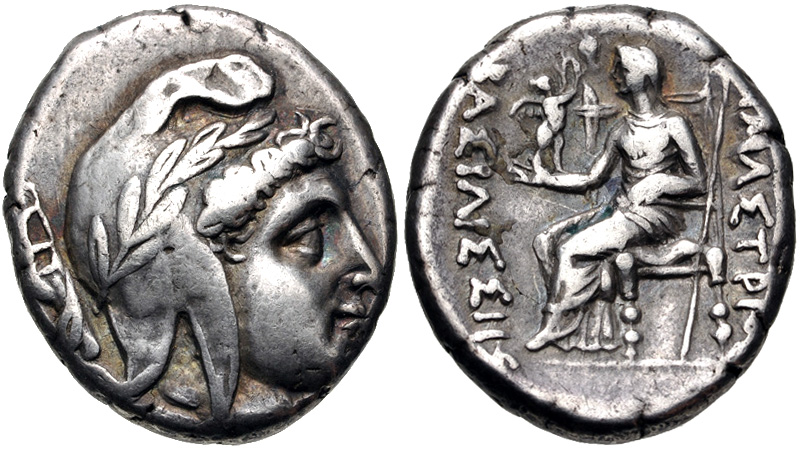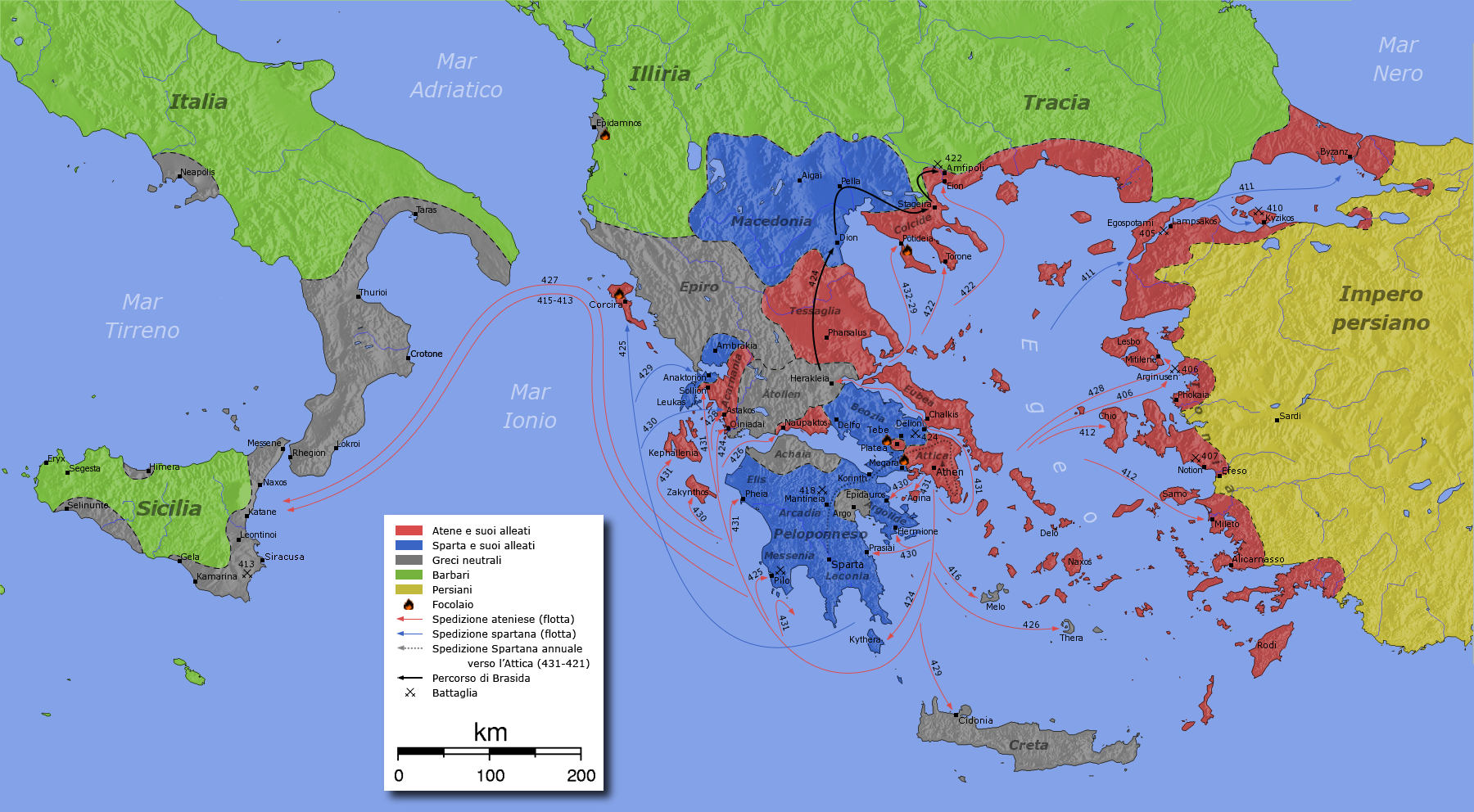|
Amastris (daughter Of Oxyathres)
Amastris ( grc-gre, Ἄμαστρις; killed c. 284 BC) also called Amastrine, was a Persian princess, and Tyrant-ruler of the city of Heraclea from circa 300 to her death. She was the daughter of Oxyathres, the brother of the Persian King Darius III. Life Amastris was given by Alexander the Great in marriage to Craterus, however Craterus later decided to marry Phila, one of the daughters of Antipater. Still, he first arranged his wife's advantageous marriage to Dionysius, tyrant of Heraclea Pontica, in Bithynia, whom she married in 322 BC. She had two sons with him named Clearchus and Oxyathres. After the death of Dionysius, in 306, Amastris became guardian of their children. Several others joined in this administration. Amastris married Lysimachus in 302. However, he abandoned her shortly afterwards and married Arsinoe II, one of the daughters of Ptolemy I Soter, the first Pharaoh of Ptolemaic Egypt. After her marriage to Lysimachus ended, Amastris retired to He ... [...More Info...] [...Related Items...] OR: [Wikipedia] [Google] [Baidu] |
British Museum
The British Museum is a public museum dedicated to human history, art and culture located in the Bloomsbury area of London. Its permanent collection of eight million works is among the largest and most comprehensive in existence. It documents the story of human culture from its beginnings to the present.Among the national museums in London, sculpture and decorative and applied art are in the Victoria and Albert Museum; the British Museum houses earlier art, non-Western art, prints and drawings. The National Gallery holds the national collection of Western European art to about 1900, while art of the 20th century on is at Tate Modern. Tate Britain holds British Art from 1500 onwards. Books, manuscripts and many works on paper are in the British Library. There are significant overlaps between the coverage of the various collections. The British Museum was the first public national museum to cover all fields of knowledge. The museum was established in 1753, largely b ... [...More Info...] [...Related Items...] OR: [Wikipedia] [Google] [Baidu] |
Antipater
Antipater (; grc, , translit=Antipatros, lit=like the father; c. 400 BC319 BC) was a Macedonian general and statesman under the subsequent kingships of Philip II of Macedon and his son, Alexander the Great. In the wake of the collapse of the Argead house, his son Cassander would eventually come to rule Macedonia as a king in his own right. In 320 BC, Antipater was elected regent of all of Alexander the Great's Empire but died the following year. In a perplexing turn of events, he chose an infantry officer named Polyperchon as his successor instead of his son Cassander, and a two-year-long power struggle ( the Second War of the Diadochi) ensued. Career under Philip and Alexander Nothing is known of his early career until 342 BC, when he was appointed by Philip to govern Macedon as his regent while the former left for three years of hard and successful campaigning against Thracian and Scythian tribes, which extended Macedonian rule as far as the Hellespont ... [...More Info...] [...Related Items...] OR: [Wikipedia] [Google] [Baidu] |
Arrian
Arrian of Nicomedia (; Greek: ''Arrianos''; la, Lucius Flavius Arrianus; ) was a Greek historian, public servant, military commander and philosopher of the Roman period. ''The Anabasis of Alexander'' by Arrian is considered the best source on the campaigns of Alexander the Great. Scholars have generally preferred Arrian to other extant primary sources; though this attitude is beginning to change in light of modern studies into Arrian's method. Arrian's life Arrian was born in Nicomedia (present-day İzmit), the provincial capital of Bithynia. Cassius Dio called him Flavius Arrianus Nicomediensis. In respect of his birth date, sources provide similar dates for his birth; within a few years prior to 90, 89, and 85–90 AD. The line of reasoning for dates belonging to 85–90 AD is from the fact of Arrian being made a consul around 130 AD, and the usual age for this, during this period, being forty-two years of age. (ref. pp. 312, & SYME 1958, ''same page''). Hi ... [...More Info...] [...Related Items...] OR: [Wikipedia] [Google] [Baidu] |
Tius
Tium ( el, Τῖον) was an ancient settlement, also known as Filyos ( el, Φίλειος), on the south coast of the Black Sea at the mouth of the river Billaeus in present-day Turkey. Ancient writers variously assigned it to ancient Paphlagonia or Bithynia. Apart from ''Tium'', Latinized forms of the name are ''Teium'', ''Tieium'' and ''Tius'', corresponding to the Greek names Τεῖον (Teion), Τιεῖον (Tieion), Τῖον (Tion) and Τῖος (Tios). History The town was founded as a colony from the Greek city of Miletus in the 7th century BCE. According to Strabo, the town was only remarkable as the birthplace of Philetaerus, founder of the royal dynasty of Pergamon. At the beginning of the 3rd century BCE, Amastrine (Amastris), the niece of the last Persian king Darius III, who was the wife of Dionysius of Heraclea, Dionysius, tyrant of Heracleia, and after his death the wife of Lysimachus caused a synoecism of Sesamus, Cytorus, Cromna (Paphlagonia), Cromn ... [...More Info...] [...Related Items...] OR: [Wikipedia] [Google] [Baidu] |
Cytorus
Cytorus (Greek Κύτωρος, Kytoros; also Cytorum, Κύτωρον, Kytoron and Κύτωρις) was an ancient Greek city on the northern coast of Asia Minor. Mentioned by Homer, Cytorus survives in the name of Gideros, which is both * a bay of the Black Sea and * the adjacent neighbourhood (''mahalle'') of the village of Kalafat in the district (''ilçe'') of Cide in the Kastamonu Province of Turkey. Gideros is 12 km west of the town of Cide, 15 km east of Kurucaşile. Possibly the name of Cide itself is derived from Cytorus.Article "Cide" in the cited work of Umar. Its mythical founder was Cytiorus, son of Phrixus, according to Ephorus and Stephanus of Byzantium. In giving the Trojan battle order in Book 2 of the Iliad, Homer mentions Cytorus and Sesamon as Paphlagonian settlements, along with others around the river Parthenius, today's Bartın River. Sesamon is today's Amasra. This town was Amastris for Strabo, who writes of its founding through a union of ... [...More Info...] [...Related Items...] OR: [Wikipedia] [Google] [Baidu] |
Cromna (Paphlagonia) both being suggested. However, modern scholars place its site near modern Tekeönü.
Cromna or Kromna ( grc, Κρῶμνα) was a town on the Paphlagonian coast, now in modern Turkey. It is mentioned by Homer in the ''Iliad''. It was 60 stadia east of Erythini and 90 west of Cytorus. There are autonomous coins of Cromna. The site of Cromna has been the subject of some disagreement among sources: Amasra and Kurucaşile Kurucaşile is a town in Bartın Province in the Black Sea Region of Turkey. It is the seat of Kurucaşile District. References Populated places in ancient ...[...More Info...] [...Related Items...] OR: [Wikipedia] [Google] [Baidu] |
Synoecism
Synoecism or synecism ( ; grc, συνοικισμóς, ''sunoikismos'', ), also spelled synoikism ( ), was originally the amalgamation of villages in Ancient Greece into ''poleis'', or city-states. Etymologically the word means "dwelling together (''syn'') in the same house (''oikos'')." Subsequently, any act of civic union between polities of any size was described by the word ''synoikismos''. The closest analogy today is the incorporation of a city; in fact, "incorporation" is often used to translate synoikismos, in addition to the Latinized synoecism. Synoecism is opposed to Greek dioecism (διοικισμóς, ''dioikismos''), the creation of independent communities within the territory of a polis. Synoecism is the result of a few major factors, mainly an increase in population density of adjacent settlements, with an incorporation proposed for economic, political or ideological advantages, such as the synoecism of the communities of Attica into Athens, or by imposition o ... [...More Info...] [...Related Items...] OR: [Wikipedia] [Google] [Baidu] |
Paphlagonia
Paphlagonia (; el, Παφλαγονία, Paphlagonía, modern translit. ''Paflagonía''; tr, Paflagonya) was an ancient region on the Black Sea coast of north-central Anatolia, situated between Bithynia to the west and Pontus to the east, and separated from Phrygia (later, Galatia) by a prolongation to the east of the Bithynian Olympus. According to Strabo, the river Parthenius formed the western limit of the region, and it was bounded on the east by the Halys River. ''Paphlagonia'' was said to be named after Paphlagon, a son of the mythical Phineus.Eustath. ad Horn. II. ii. 851, ad Dion. Per. 787; Steph. B. t.v.; Const. Porph. de Them. i. 7. Geography The greater part of Paphlagonia is a rugged mountainous country, but it contains fertile valleys and produces a great abundance of hazelnuts and fruit – particularly plums, cherries and pears. The mountains are clothed with dense forests, notable for the quantity of boxwood that they furnish. Hence, its coasts were occupied by ... [...More Info...] [...Related Items...] OR: [Wikipedia] [Google] [Baidu] |
Amasra
Amasra (from Greek Amastris Ἄμαστρις, ''gen''. Ἀμάστριδος) is a small Black Sea port town in the Bartın Province, Turkey, formerly known as Amastris. The town today is much appreciated for its beaches and natural setting, which has made tourism the most important activity for its inhabitants. In 2021 the population was 6,098. Amasra has two islands: the bigger one is called Büyük ada ('Great Island'), the smaller one Tavşan adası ('Rabbit Island'). It was annexed by the Ottoman Empire after the Siege of Amasra. History Situated in the ancient region of Paphlagonia, the original city seems to have been called Sesamus (Greek: Σήσαμος), and it is mentioned by Homer in conjunction with Cytorus. StephanusStephanus, ''Ethnica'', s.v. "Amastris" says that it was originally called Cromna ( grc, Κρῶμνα); but in another place, where he repeats the statement, he adds, as it is said; but some say that Cromna is a small place in the territory of Ama ... [...More Info...] [...Related Items...] OR: [Wikipedia] [Google] [Baidu] |
Ptolemy I Soter
Ptolemy I Soter (; gr, Πτολεμαῖος Σωτήρ, ''Ptolemaîos Sōtḗr'' "Ptolemy the Savior"; c. 367 BC – January 282 BC) was a Macedonian Greek general, historian and companion of Alexander the Great from the Kingdom of Macedon in northern Greece who became ruler of Egypt, part of Alexander's former empire. Ptolemy was pharaoh of Ptolemaic Egypt from 305/304 BC to his death. He was the founder of the Ptolemaic dynasty, which ruled Egypt until the death of Cleopatra in 30 BC, turning the country into a Hellenistic kingdom and Alexandria into a center of Greek culture. Ptolemy I was the son of Arsinoe of Macedon by either her husband Lagus or Philip II of Macedon, the father of Alexander. However, the latter is unlikely and may be a myth fabricated to glorify the Ptolemaic Dynasty. Ptolemy was one of Alexander's most trusted companions and military officers. After the death of Alexander in 323 BC, Ptolemy retrieved his body as it was en route to be buried in ... [...More Info...] [...Related Items...] OR: [Wikipedia] [Google] [Baidu] |
Arsinoe II
Arsinoë II ( grc-koi, Ἀρσινόη, 316 BC – unknown date between July 270 and 260 BC) was a Ptolemaic queen and co-regent of the Ptolemaic Kingdom of ancient Egypt. She was given the Egyptian title "King of Upper and Lower Egypt", making her pharaoh as well. Arsinoe was Queen of Thrace, Anatolia, and Macedonia by marriage to King Lysimachus. She became co-ruler of the Ptolemaic Kingdom upon her marriage to her brother, Pharaoh Ptolemy II Philadelphus. Life Early life Arsinoë was the first daughter of Pharaoh Ptolemy I Soter, founder of the Hellenistic state of Egypt, and his second wife Berenice I of Egypt. She was maybe born in Memphis, but was raised in the new city of Alexandria, where her father moved his capital. Nothing is known of her childhood or education, but judging from her later life as patron of scholars and noted for her learning, she is estimated to have been given a high education. Her brothers were tutored by intellectuals hired by their fathers ... [...More Info...] [...Related Items...] OR: [Wikipedia] [Google] [Baidu] |






